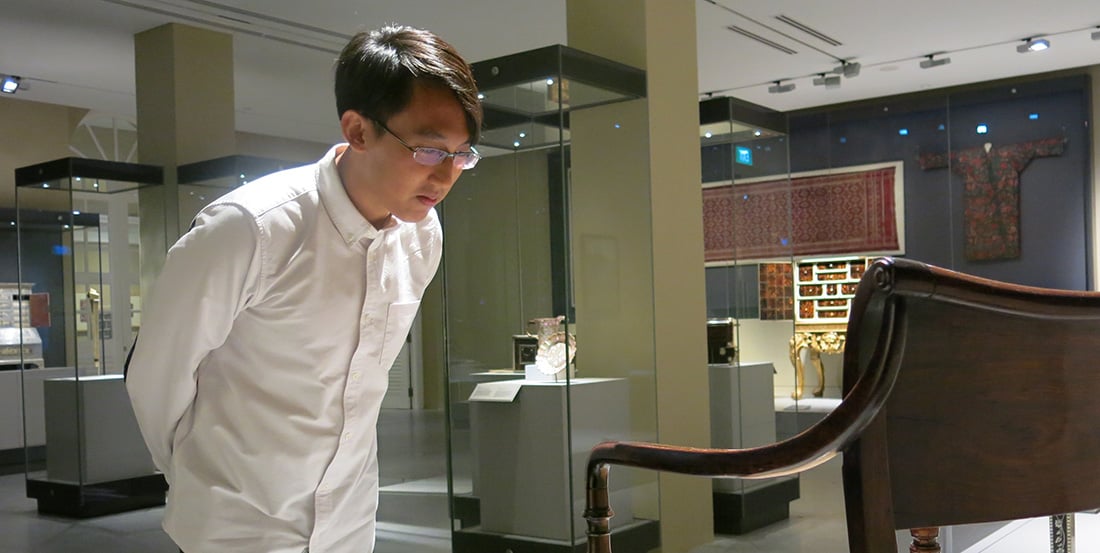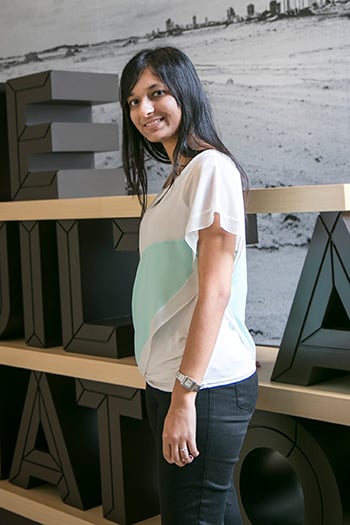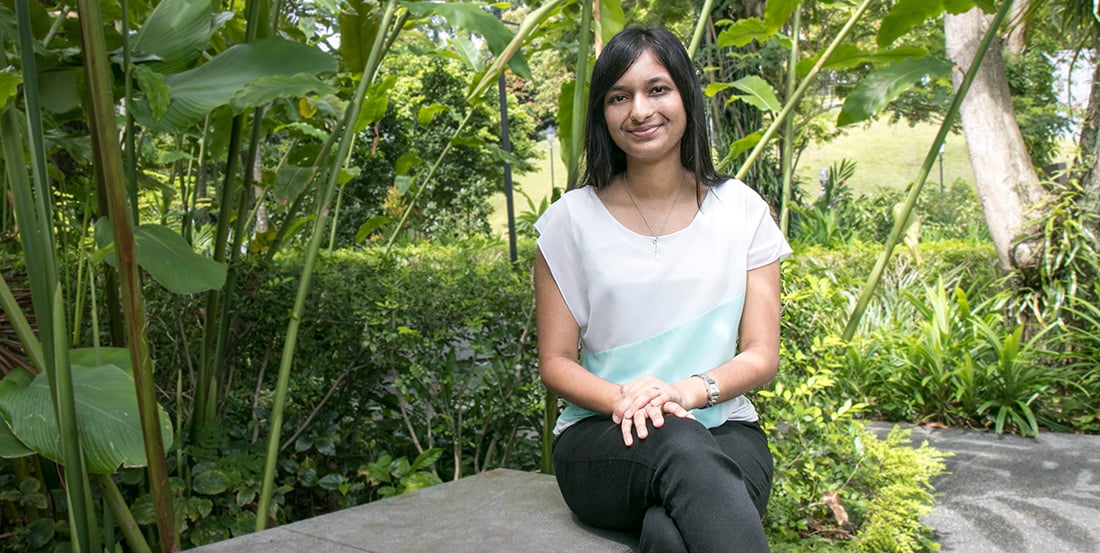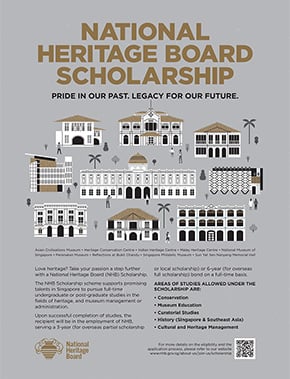To most Singaporeans, thinking about the National Heritage Board (NHB) evokes memories of museum tours and exhibitions. What many of us do not realise, however, is that NHB plays a much more diverse and far-reaching role than just managing museums. It also looks into heritage education and research, managing our National Collection, preserving National Monuments and marking historic sites in Singapore, amongst other functions.
As custodian of our heritage, NHB is responsible for preserving and celebrating our shared history, so as to connect our past with present and future generations of Singaporeans.
It was this social mission that attracted undergraduates Dominic Low and Ruchi Mittal, both of whom took up the NHB Scholarship to share their passion for the arts with others. Now, with a few years of experience under their belts, the duo looks back upon their scholarship journey and shares some insights into Singapore’s burgeoning heritage sector.
Tell us about what you do at NHB.
Dominic Low: I am an Assistant Curator at the Peranakan Museum. Currently I am working with a fellow curator on the “Joseon Korea: Court Treasures and City Life” exhibition, which would be shown at the Asian Civilisations Museum (ACM) till end July. I am also liaising with a guest curator for an exhibition at the Peranakan Museum. Apart from these two projects, I am also managing other acquisitions and projects.
Ruchi Mittal: As an Assistant Manager in the Education and Community Outreach Division, my work revolves around content and research for community outreach initiatives. These include heritage trails, travelling exhibitions, and the first community museum at Taman Jurong.
My latest project is the recently-launched Little India Heritage Trail, which features three thematic routes that showcase the area in a new light. For such a small precinct, it is fascinating how much history is packed into it!

Low Soon Aik Dominic
NHB Scholar
Assistant Curator (Peranakan)
Asian Civilisations Museum
What are some memorable highlights of your career thus far?
Dominic: The installation of “Grains of Thought”, ACM’s first contemporary art commission was especially memorable. We had to move two large, fragile 5m-long rice sculptures through a fire exit door and suspend them from the ceiling. It was the culmination of weeks of planning and meetings with the architects, structural engineer, artist and museum staff, so you could imagine the sense of anticipation. The sight of raising those giant sculptures was just incredible.
Ruchi: The most memorable moments for me are usually the project launches. For the first project I worked on, the SG50 Jubilee Big Walk, my colleagues and I dressed up as the iconic dragonhead playground. The next year we even reached out to the Community Chest and volunteered to do a guided tour for beneficiaries along the same route. It was great to see how positive the experience was for those who participated.

Ruchi Mittal
NHB Scholar
Assistant Manager
Education and Community Outreach
Both of you kick-started your careers with internships. How did these experiences come in useful?
Dominic: I was based at the Heritage Conservation Centre (HCC), where I worked with the Collections Management team to compile the status of IP rights for objects in the National Collection. I also helped look into issues of conservation and documentation of contemporary artworks made of unconventional materials. Additionally, I was also tasked to draft a paper that re-examined the acquisition process of contemporary artworks in order to capture crucial information that would help determine future treatment decisions.
In retrospect, the internship gave me a greater sense of context of the work I do today. As an example, I better understand the interdependent roles of the many stakeholders involved to launch an exhibition. So while my team conceptualises exhibitions at the Peranakan Museum, another team at HCC is working equally hard to make the preservation and presentation of the selected artefacts possible.
Ruchi: I did two internships during my summer breaks, both about six weeks long. The first was at the Singapore Art Museum (when it was still part of NHB). Here I assisted the Education and Programmes team to prepare 82 artists’ folios for the 2013 Singapore Biennale. My second internship was at the Malay Heritage Centre, where I helped work on the “Budi Daya” exhibition to be launched in conjunction with the annual Malay CultureFest.
What I learnt through these experiences was how to be an effective communicator. It is an especially critical skill when I have to explain to the community complex concepts, that the artists are trying to put across without overly simplifying or flattening the artworks.
What are some unique opportunities in store for Singapore’s heritage scene?
Dominic: As the sector is dynamic, NHB is always adapting to the opportunities and challenges that arise. NHB scholars can look forward to new exhibitions at the museums. Perhaps even the renovation of some permanent galleries as we continuously find new ways to preserve and celebrate our heritage.
Ruchi: Working in the heritage scene is rewarding because our work is cutting-edge and pioneering. At NHB, we consolidate information on Singapore’s history that the public would not otherwise know. We do this by pulling together painstaking research from maps, news articles, and other resources over the years. All these then become a valuable resource for students, researchers and members of the public.
Any words of advice for aspiring NHB scholars?
Dominic: Commitment to excellence, passion, integrity and creativity are qualities that many in NHB possess. These qualities are crucial as we further our cause to preserve our heritage and share it with Singaporeans, and by extension, the global community.
Ruchi: Do it! If you are interested in history and heritage, NHB is the place to be.

